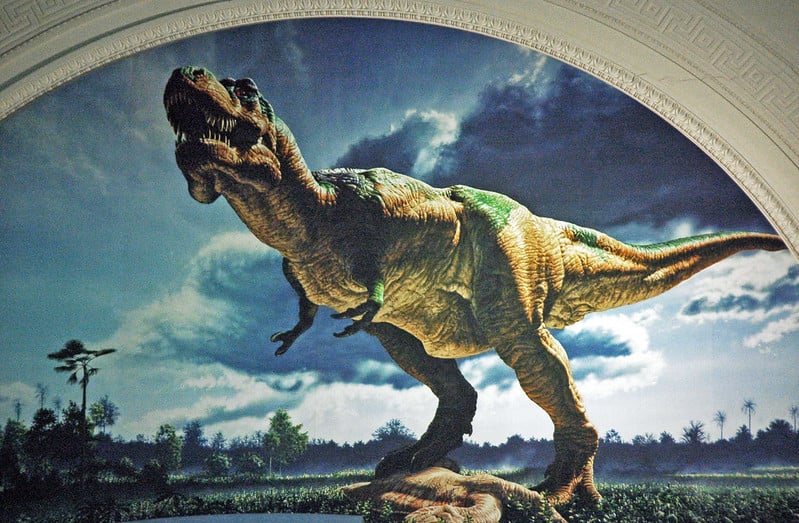
A team of paleontologists believes that a big burst of volcanoes resulted in the extinction of dinosaurs on Earth. Some are supporting this in a rather innovative manner, although it contradicts the giant space rock (asteroid) theory.
The way the question is phrased, however, has the potential to affect the answer. While this is the case between humans, it is most certainly true for computers.
For many, the argument about what might have wiped out the non-avian dinosaurs was settled quite a while ago. Researchers discovered the location where the asteroid hit, the layer of metals from it, and the soot from the resulting fires of the impact. They are convinced that following that particular moment, no more dinosaurs were alive, and that was the end of that chapter in our planet’s history.
For extra measure, researchers even identified fossils from the exact day the asteroid smacked into Earth. Nonetheless, there remain some experts—albeit a rather small group—that aren’t convinced, according to IFL Science.
This group does agree that the repercussions of the asteroid or comet were devastating, but the scientists don’t believe that the dinosaurs vanished in an instant. Rather, they believe it was a slow extinction influenced by volcanoes. Since most scientists and the general public wouldn’t buy into this hypothesis, artificial intelligence (AI) is being utilized to assist these out-of-the-box thinkers in convincing others.
Feeding geological and climatic data to 100 processors
Alex Cox, a student from Dartmouth University, relied on over a hundred processors to analyze data on the Earth’s rocks and climate from the time when dinosaurs disappeared. Fossil records were inspected to determine what might have caused extinctions around the Cretaceous-Paleogene boundary.
The system that Cox and his supervisor, Dr. Brenhin Keller, formulated suggests a different answer compared to what most of the thousands of scientists came up with.
Triceratops was one of the last-known non-avian dinosaurs and lived until the Cretaceous–Paleogene extinction and name literally means 'three-horned face', is derived from the Greek words trí- (τρί-) meaning 'three', kéras (κέρας) meaning 'horn', and ṓps (ὤψ) meaning 'face'. pic.twitter.com/dFP0ljAIMK
— Dinosaur (@ToTricera36021) November 25, 2023
Those who buy into the volcano theory point to the massive amount of basalt in the Deccan Traps, which is about 1.3 million cubic kilometers. This was formed around the time of the dinosaurs’ extinction.
In other parts of the world, places with equally large volcanic areas have been linked to mass extinctions due to changes in climate from by the gases released by the lava, according to IFL Science.
Examining levels of carbon dioxide and sulfur dioxide
A key part of the argument revolves around whether dinosaurs and other creatures were on the decline prior to the Chicxulub crater impact or if it was just the regular pattern of nature that played out.
Cox and his team examined the proof we have pertaining to the levels of carbon dioxide and sulfur dioxide in the air. They examined its effects on Earth’s temperatures for about two million years prior to the impact and after the end of the Cretaceous period using a machine-learning model similar to predictive text. The processors were set up in such a way so as to best determine which of the three hundred thousand scenarios made the most sense.
“Part of our motivation was to evaluate this question without a predetermined hypothesis or bias,” Cox said in a statement. “Most models move in a forward direction. We adapted a carbon-cycle model to run the other way, using the effect to find the cause through statistics, giving it only the bare minimum of prior information as it worked toward a particular outcome. In the end, it doesn’t matter what we think or what we previously thought—the model shows us how we got to what we see in the geological record.”
The computers observed a quick drop in biological activity following the impact. This happened too quickly to be caused by volcanoes. However, they also suggested that the climate changes needed for a mass extinction likely stemmed from the Deccan Traps alone, as reported by IFL Science.
In other words, many dinosaurs might have become extinct even if the asteroid hadn’t hit, according to the latest AI-based findings.
See all the latest news from Greece and the world at Greekreporter.com. Contact our newsroom to report an update or send your story, photos and videos. Follow GR on Google News and subscribe here to our daily email!



